| Concerning the reproduction of rotifers there are two groups. The Bdelloidea or Digononta (which have two germovitellaria) reproduce exlusively asexually by obligate parthenogenesis. No male bdelloid rotifers have ever been observed! The monogonont rotifers may reproduce either asexually by parthenogenesis or sexually. |
| Obligate parthenogenesis of digonont rotifers (Bdelloidea) |
| Bdelloid rotifers (Bdelloidea/ Digononta) reproduce always asexually; this is called obligate parthenogenesis. Asexual reproduction of bdelloids can be accomplished by vivipary or by ovipary. |
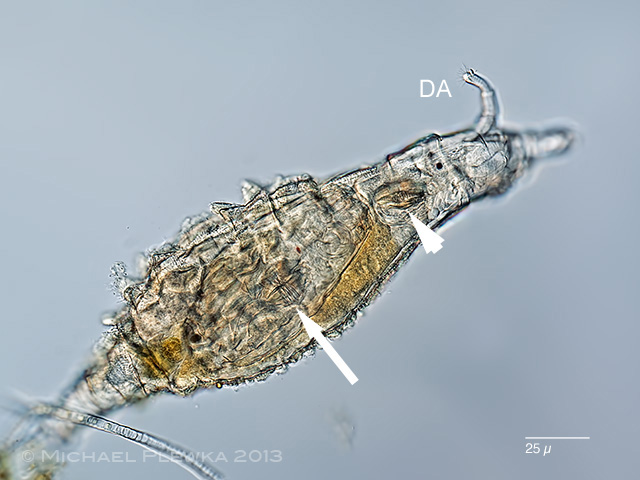 |
| Vivipary occurs mainly in the genera Dissotrocha and Rotaria (the above image shows a specimen of Dissotrocha macrostyla, with two trophi: the trophi of the daughter are marked by the an arrow, the trophi of the mother are marked by arrowhead). |
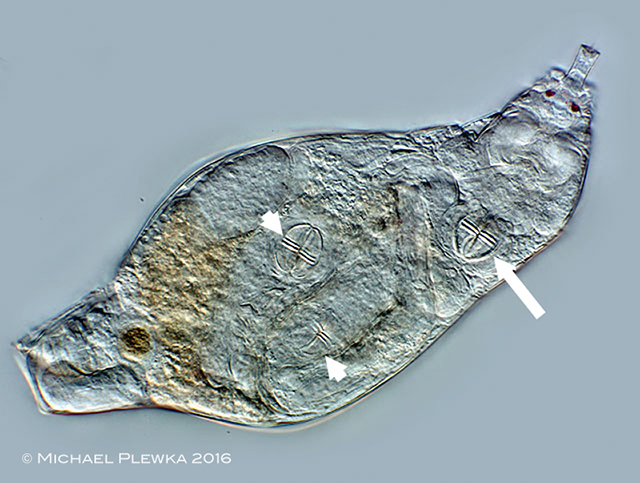 |
| In this specimen of Rotaria citrina three trophi are visible. This species is no predator of other rotifers: the left two trophi (arrowheads) are from two daughters, while the right one (arrow) belongs to the mother. |
 |
| Ovipary occurs mainly in the family Adinetidae, Habrotrochidae, Philodinavidae, and the genera Macrotrachela, Mniobia, Philodina, Pleuretra in the family Philodinidae. The image shows Adineta editae with an egg. |
| |
| Monogonont rotifers |
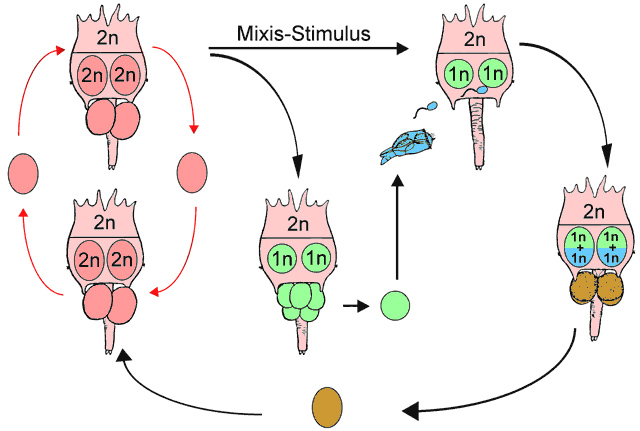 |
This schematic drawing shows the different types of reproduction of the monogonont rotifers The left cycle (red): parthenogenesis by amictc egg; right: sexual reproduction (green/ blue) by males (blue) which results in a resting egg. |
| parthenogenesis |
| The Monogononta have different types of eggs. The eggs that are produced while reproducing parthenogenetically are diploid (red: 2n) and are either carried by the female, for example Anuraeopsis, Brachionus, deposited near the sheath (for example: Collotheca; Ptygura) or they develop inside the mother until the daughter is born (eg. Asplanchna; Rhinoglena). These eggs are called amictic eggs, becaues they develop without mixis (fertilization by a haploid sperm cell). Parthenogenetic reproduction enables the population to increase rapidly because there is no need for finding a sexual partner, which is always an advantage if the distance between specimen is large, eg in lakes or ponds. As a consequence the rotifer population can more effectively exploit food resources, for example planktonic algae which start growing with increasing day length / light in spring. |
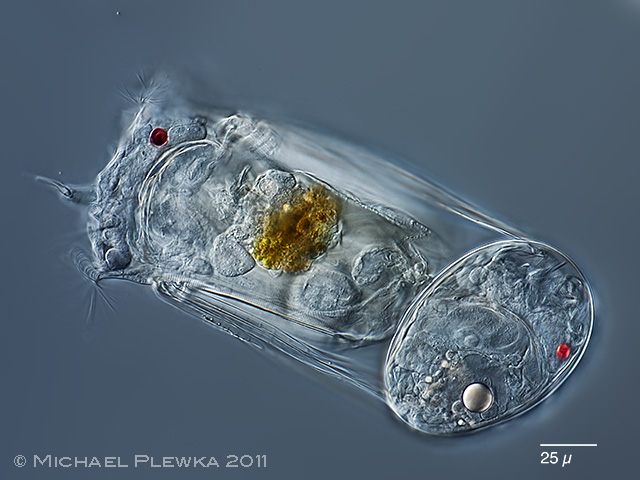 |
| The monogonont rotifer Polyarthra vulgaris carrying an amictic egg. |
| |
| sexual reproduction |
| The other type of reproducing is sexually by mictic eggs. When a so-called "mictic stimulus" ("Mixis stimulus" in German) occurs in the environment, which could be for example changes in the chemical composition of the surrounding water or the temperature, the females may produce haploid eggs (green: 1n). If these eggs are not fertilized they develop into haploid males (blue) which are usually pretty much smaller (there are exceptions, for instance Asplanchna) and look different from the females (sexual dimorphism). The males can now fertilize the mictic eggs of mictic females (blue+green: 1n+1n). These fertilized eggs (brown) are called "resting eggs". The resting eggs have a mechanichally and also chemically very durable shell which is species-specific and enables the egg to survive bad environmental conditions like ice in ponds or dry seasons. |
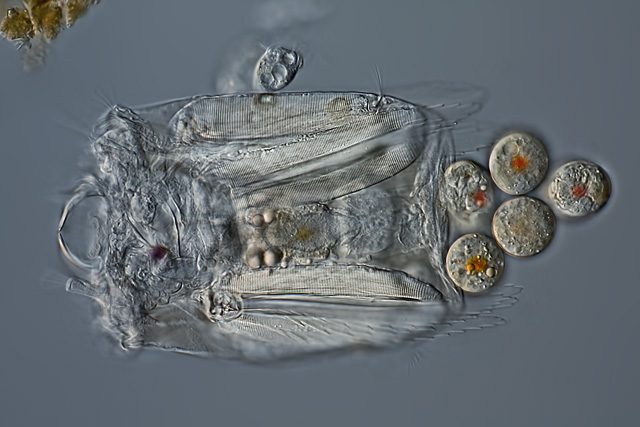 |
| Some of the mictic eggs are carried inside of the female. These may be fertilized by male rotifers (see below). The other part of the mictic eggs are carried outside of the rotifers as shown here: the monogonont rotifer Polyarthra vulgaris carrying mictic eggs, from which males will hatch. |
| |
| rotifer males |
 |
| Polyarthra vulgaris: male specimen (see the different appearance compared to the female in the image above): This is an example of the sexual dimorphism in monogonont rotifer. Pe: penis; Ft: foot. Some other monogonont males are here >>>. |
| |
| mating |
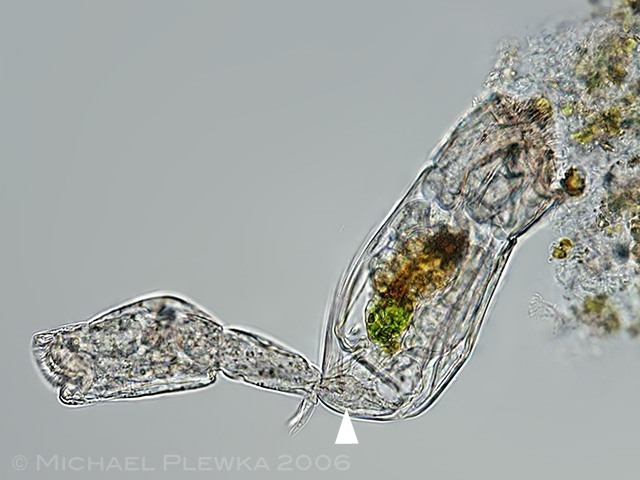 |
| Unfortunetely I could never observe the mating of Polyarthra. So here ist an image of the mating of a Cephalodella species |
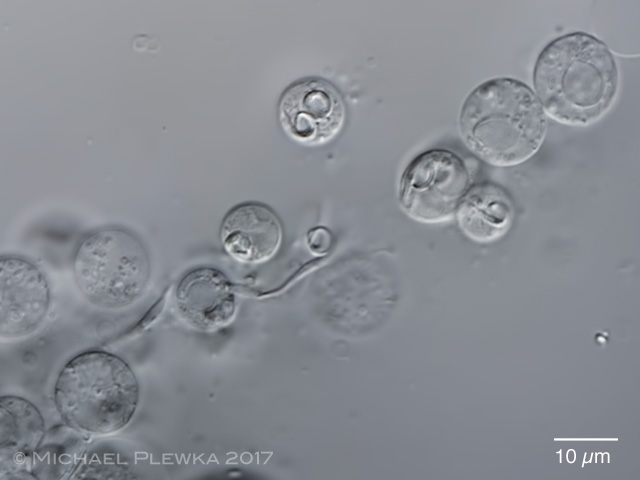 |
| Asplanchna priodonta, sperms / spermatocytes. |
| |
| resting eggs |
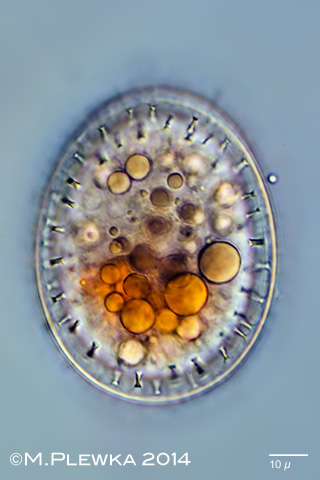 |
| The result of mating: resting egg (example: Polyarthra vulgaris). An overview of species of which resting eggs could be documented is here >>>> |
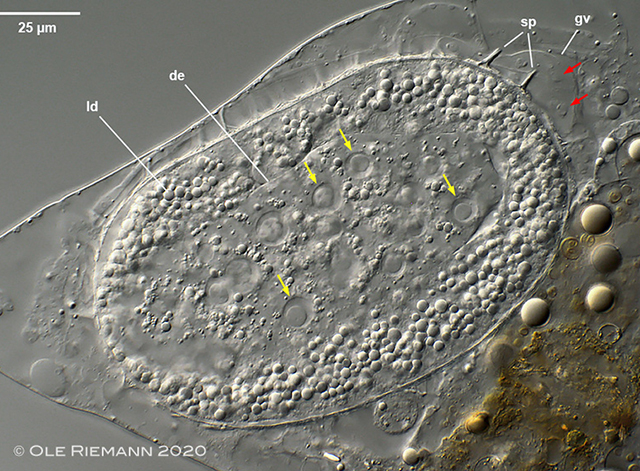 |
The result of mating: resting egg (example: Rhinoglena frontalis; image courtesy Ole Riemann, Würzburg); beginning of development. This egg is still inside the mother. The red arrows point to the (degenerated) nuclei of the germovitellarium (gv); the yellow arrows point to some of the nuclei of the developing embryo (de). The presence of several nuclei indicates that the development of the embryo / cleavage has already started. Resting eggs can therefore be understood as diapausing embryos, which then will continue to develop after being activated by external stimuli.
gv: germovitellarium; ld: lipid droplets. Two spines (sp) of the shell of the resting egg are already visible. |
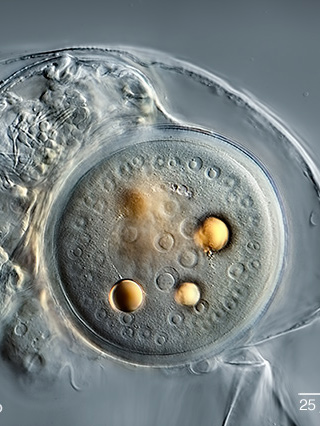  |
| Two more examples of resting eggs with developing embryo: Asplanchna priodonta (left image) and Filinia longiseta (right image) |
| |
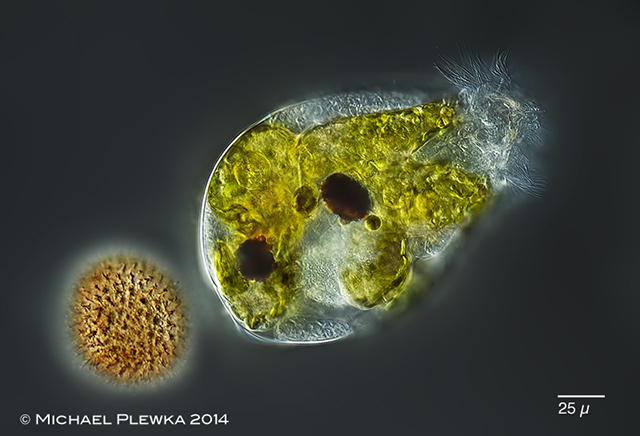 |
| Depending on the species the resting eggs may be deposited by the females or are carried by the female like here in this Ascomorpha ecaudis specimen. |
| |
 |
| In some of the monogonont species (Lecane, Rhinoglena) the resting eggs remain in the females until she dies. Here an example of a dead female specimen of Lecane bulla. |
|
| |